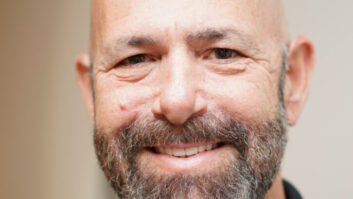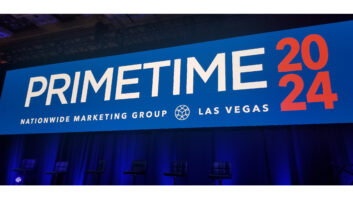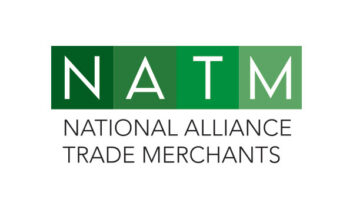Orlando, Fla. – Nationwide Marketing Group sees growth and
profit opportunities as Samsung and Panasonic — and reportedly other CE
vendors — issue new pricing guidelines, as Sears announces store closings, and
as the group increases its furniture business.
Nationwide’s management team met here with the media Monday
morning during its annual PrimeTime! event at the Gaylord Palms hotel. The
event has drawn a record crowd of more than 3,400 attendees.
Robert Weisner, CEO; Dave Bilas, executive VP; and Doug
Schatz, electronics merchandising VP, reported that Samsung has put in place a
unilateral pricing strategy for part of its CE line. Separetly Samsung
confirmed to TWICE that it has issued new unilateral pricing policies, but did
not provide further details.
They said this will benefit the group’s dealers since it
applies in part to “higher featured products that our type of retailers sell,”
Schatz said.
Separately, Panasonic confirmed to TWICE at the show that
its 2012 home entertainment line will now “serve a reduced number of dealers
directly” and will handle the rest of its retailers by going through
distributors. The company also said its MAP policy has broadened the range of
products for which sale through third-party marketplaces is not permissible
under its MAP policy, including home entertainment products such as TVs,
Blu-ray and home-theater products.
Weisner confirmed that other CE brands are planning a
similar new unilateral pricing and channel strategy, but did not provide names.
“All six or eight top-tier CE vendors have similar plans to
accomplish the same goal. Most have some enforcement involved. If you add up
the numbers” in losses, especially in TV, “they have been told to change their
business model.”
Schatz noted that the strategy is “born out of necessity,” adding
that unilateral pricing programs coupled with a retail channel strategy “have a
chance to work” rather than the MAP-only programs of the past.
He added, “Nationwide supports this effort. We want to make
it work.”
Schatz said that in Samsung’s case it has taken a
“multifaceted approach, on one hand to have a unilateral pricing program for
some products, some of which are higher end. [Those products] need a selling
floor to sell them, and [vendors] have to invest in those selling floors so
they will survive … and generate profits for everyone.”
This would mean Nationwide-type dealers would be able to
profitably sell 50-inch and larger flat screens. “That is our membership’s
skill set, to sell these products on a value-added sales floor with
well-trained salespeople,” Schatz said.
Part of all this plays into the change by CE manufacturers,
Schatz said, where they are now “building to forecast vs. building to sell.”
The former means that vendors will now manufacturer what is ordered and,
theoretically, will not overwhelm retailers with inventory that has to be sold
off every month.
As far as channel management, Schatz said, “That’s when the
right products are sold in the right channel. We can sell value-added products
— smart TV, 3D, voice- and gesture-based controls — that require a selling
floor. Our view is we are part of the solution. We applaud Samsung as a market
leader in this effort.”
“The industry has been through so many false starts on this,
but despite this I am optimistic,” he said.
The announced closings of Sears’ locations and the spinoff
of parts of its business “is a positive for us,” Bilas said, again citing
Nationwide’s product selection in CE and major appliances and value-added sales
floor.
In major appliances, where Sears remains the No. 1 retailer,
Jeff Knock, appliance marketing senior VP, said, “Sears’ major appliance
customers are used to being served, so this is really great news for our
members and vendors. We know the Sears customer. We can serve them. Our members
can serve that customer because they can depend upon the Nationwide members to
give them the product mix they want.”
He added that major appliance vendors “may be concerned on
the volume level, but they know the independents can serve those consumers. It
will strengthen our relationship with [vendors].”
On the CE side, Schatz said changes at Sears “benefits our
membership … since we have a value-added sales floor. Again, our ability to
demonstrate CE products like over-50-inch flat screens are a sweet spot for us
and benefit members.”
In non-CE and major appliance moves, Nationwide is putting
an emphasis on more bedding and furniture sales for its members, and trying to
attract more furniture retailers to carry CE and vice-versa.
Weisner remarked that “margin degradation in electronics and
appliances is a factor” in turning more towards bedding and furniture, among
other categories.
“We want our members to sell more and expose their customers
to more categories,” Weisner said. For some members, “bedding is the holy grail
… with 30 points of margin” and the ability to pay for a store’s overhead while
still attracting consumers with CE and majaps.
Nationwide has about 3,000 members, with $6.5 billion of its
$12 billion in annual volume from major appliances.
Weisner has ambitious plans for the group and said
Nationwide is targeting 1,000 more retailers, many of them furniture dealers
because of that category’s great growth potential.
He said “furniture stores want to get into electronics and
appliances” to increase traffic, and members that currently do not sell
furniture to increase profitability.
For more coverage of
the Nationwide Marketing Group meeting visit TWICE.com and the March 12 print
issue of TWICE.













